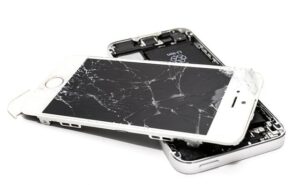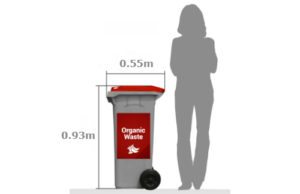Planned Obsolescence Disadvantages 💡 – What Is It And What Does It Do?
Energy Disrupter
Planned Obsolescence Disadvantages 💡: When I say planned obsolescence, what first comes to your mind? Do you think about your spent money on the latest technology? Or do you think about the broken LED light bulb you have to change again?
Either way, planned obsolescence brings no good to both consumers and the environment. What is “planned obsolescence”, anyways? Answer: it is the drastic reduction of lifespan of a product.
>Download Now: Free PDF Business Owners Guide To General Waste Bin Services
Together with plastic pollution, toxic e-waste materials continue to pester the environment around us. And that has something to do with how technology is manufactured nowadays. Let me discuss it more to you, readers.
A bit about Waster
Before I continue further on the topic of planned obsolescence and its disadvantages, let me first discuss with you Waster.
Waster is an innovative solution for your waste management and recycling needs. We offer 30-day, flexible contracts to small and medium businesses all throughout Australia. Additionally, Waster is proven to be a high-quality bin service provider.
Click on the blue button to learn more.
Read more: See blog on fridge recycling.
Planned obsolescence disadvantages: the main cause of it
Did you know that the average Australian household produces about 73 kg of e-waste a year? Additionally, 700,000 tonnes was produced in Australia in 2018. On a global scale, we generate around 50 million tonnes of e-waste each year.
What causes this, anyways? I can think only think of one thing, and that is the fragility and built-in obsolescence of technological materials nowadays.
A little over a year ago, Italy fined Apple and Samsung for deliberately slowing down their older models of phones. Why do they do this? Well, the reason for that is simple: you get annoyed long enough due to the slowing down of your phone, which then forces you to buy a newer, much more expensive model.




This proves to be detrimental to both the people and the environment. Planned obsolescence impacts the environment greatly in a negative way as it produces more e-waste. Furthermore, the e-waste generated eventually ends up in a landfill in developing countries. Read our blog on Australian waste export to get a clearer view.
Marketing strategies nowadays technically make things worse. They promote the notion that “new is always better” instead of focusing on the sustainability and longevity of a product, especially technology.
Some positive effects of planned obsolescence
Of course, even with all of the disadvantages, there are some positive effects in doing planned obsolescence, specifically in the economic model standpoint.
First, it creates job opportunities for people. Generally, in order to produce more products, you need more people. Second, it helps companies increase revenue. But taking all of these into account, it looks like only companies benefit from this instead of others.
Going further into the disadvantages of planned obsolescence
Planned obsolescence tremendously helps companies in selling their products, there’s no doubt about that. But that simply is not true for almost everything – and everyone – else.
As a result, here are some disadvantages that planned obsolescence brings:
- It requires a lot of resources – it is only natural that when you try to produce something, resources are used. Generally, people used materials such as fossil fuel, electricity, etc. to produce such materials. Planned obsolescence consumes a lot of these materials, therefore threatening the sustainability of both the materials and the environment.
- It pollutes the environment – obviously, producing lots and lots of products mean increased waste produced. It is also said that Australia will double its e-waste production. From 138, 000 tonnes in 2012-2013, it will jump to about 223,000 tonnes in 2023-2024. Aside from plastic pollution, e-waste pollution also dominates the environment now because of planned obsolescence.
How do you counter it?
Now, how do we even counter a phenomenon such as planned obsolescence and its disadvantages to the environment? Is there a solution for it?
There is! So let us discuss them further.
- Choose a long-lasting product when buying – be a practical buyer, choose what you think is long-lasting. For example, before buying a phone, check out this website first! The phones in the list are generally built to be long-lasting, as well as sturdy.
- Don’t buy into the latest trends – “why fix something if it ain’t broke?” as the saying goes. Don’t change your phone or appliances if it still works.
- Reuse – find other ways to use your gadgets or appliances if you plan to buy new ones. Avoid putting it in the trash. Make sure not to send it in a landfill.
- Donate – give it to the needy. Or better yet, give it to your relatives who needs it.
- Look for second-hand technology – not everything needs to be brand new to function well. Buy working, second-hand gadgets or appliances if possible to avoid planned obsolescence. But first, make sure they work properly.
- Just don’t! In my opinion, you don’t need to change gadgets every now and then to impress everyone. Buy only what you need, not what you want, instead.
Read more: See blog on computer recycling.
Is recycling doing enough to help?
Is recycling doing enough to help the environment from planned obsolescence and the disadvantages it brings? Maybe it does, or maybe it doesn’t, I suppose. But let’s discuss further.
Take for example this blog about a long-lasting light bulb. Did you know that it has been operating since 1901? Certainly, they don’t build light bulbs like that anymore.
Modern LED light bulbs now typically work differently, albeit in a much more inefficient way. According to the above-mentioned blog, modern light bulbs last only about more than a month if they’re continuously lit all throughout the period. This is certainly a LED light bulb and planned obsolescence process in work – one of the most “glaring” (I may or may not have intended to put this pun) disadvantages.
Which begs me to my next question, are they only using recycling as an excuse to downgrade gadgets in order to buy newer models, which in turn promotes planned obsolescence and e-waste pollution?
I myself wouldn’t really know, but I do know that recycling is only part of the solution. Those people concerned should find ways to remove, or at least reduce, planned obsolescence without compromising the market.
In order to achieve a sustainable environment, one must not solely rely on recycling. Produce less to pollute less, as they say.
Check out our Terracycle Media Storage – Zero Waste Box for your e-waste needs.
Read more: See blog on what things can we recycle at home.


















